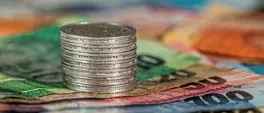Avoid Labubu blues: how to spot a real plushie doll from a Lafufu (fake Labubu)
Tasleem Gierdien
10 July 2025 | 11:44Labubu fever is everywhere and people are spending lots of Randelas to get them...

CapeTalk's Lester Kiewit speaks to Tharious Demetriou owner of The Back Door - sneaker, clothing and accessory store in Rosebank (Johannesburg).
Listen below:
Labubu fever is everywhere.
The latest pop culture accessory trend sees angry-like plushie dolls hanging from bags, keys, shoes, belts, pockets, and more.
These hyped-up dolls look like a furry monster character and were designed by Hong Kong-born artist Kasing Lung. They are reportedly inspired by the creator's favourite childhood story series, The Monsters, which are 'fuzzy little Nordic elves'.
Labubu dolls exist in many colours and variations, but their features remain the same: a snaggle-toothed grin with wide, mischievous eyes.
The doll has become THE IT accessory among 'cool kids', fashionistas, and pop culture enthusiasts who are styling them as part of a lewk, attaching one or five to their 'fit. Other Labubu lovers collect them.
The famous doll was also spotted accompanying celebrities like Rihanna and Dua Lipa - skyrocketing demand for them, despite their costly price tags, which range from R469 to almost R2,000.
Demetriou explains that Labubu stock doesn't last long because they sell "like hot cakes".
At The Back Door, Labubus are typically sold out within an hour of restocking, while the store receives around 10 to 15 calls per day about the fluffy toy, says Demetriou.
"It's a craze... they've caused mass hysteria. People are willing to pay crazy amounts. The wave will end, yes, but I don't know how long it'll last because it's been big for a while, like a year already now..."
- Tharious Demetriou, Owner - The Back Door
As the Labubu craze hits South Africa, so are cheaper knock-off versions, dubbed Lafufus.
Demetriou shares tips to avoid the Labubu blues by spotting Lafufus:
Genuine Labubus are produced by Pop Mart. They have specific characteristics that distinguish them from fakes.
Key features to check include the packaging, the toy's details (teeth, face, stitching, etc.), and the presence and function of a QR code.
- Lafufus have poor quality, including packaging: the quality of the box will be poor - embossing, logo's, and the overall box's look and feel won't feel like something made by a global leading toy manufacturer.
- Look for a QR code inside the box. Real ones should redirect to the official Pop Mart website. Check for a broken link, slow loading, or redirection to a suspicious site, which indicates a Lafufu.
-
Authentic tags have a fabric feel, not paper. The font on the tag and the logo on the foot may also be different on fakes.
- Genuine boxes have a muted, smooth colour palette. Counterfeits may have overly vibrant colours.
- Labubus come with a card to depict its unique make, colour, and originality.
- Authentic packaging will have the Pop Mart logo, Big Into Energy symbol, and Monster logo imprinted inside.
The doll:
- Teeth: Authentic Labubus have nine teeth. Lafufus have fewer or more.
- Face: Labubus have a pale, peach-toned complexion. Fakes might have bright pinks, oranges, or yellows.
- Stitching: Authentic Labubus often have cleaner, less noticeable stitching.
- Eyes: The eyes on a Labubu are glossy and embedded in the vinyl.
- Foot Stance: Lafufus have a more noticeable gap between the foot stance and ear placement.
- UV Stamp: Some newer Labubus have a UV stamp on the foot.
- Labubus have adjustable arms, and the feet may or may not rotate 360 degrees.
The safest way to ensure you're getting a Labubu instead of a Lafufu is to purchase directly from Pop Mart, either at their stores or on their official website.
If you purchase from a reseller or retailer, ensure that it's a trusted store.
RELATED: 'There's a sense of real FOMO!' Has the Labubu craze hit South Africa?
What's a Labubu? Labubu Dolls craze causes fan fury
Scroll up to the audio player to listen to the full conversation.
















